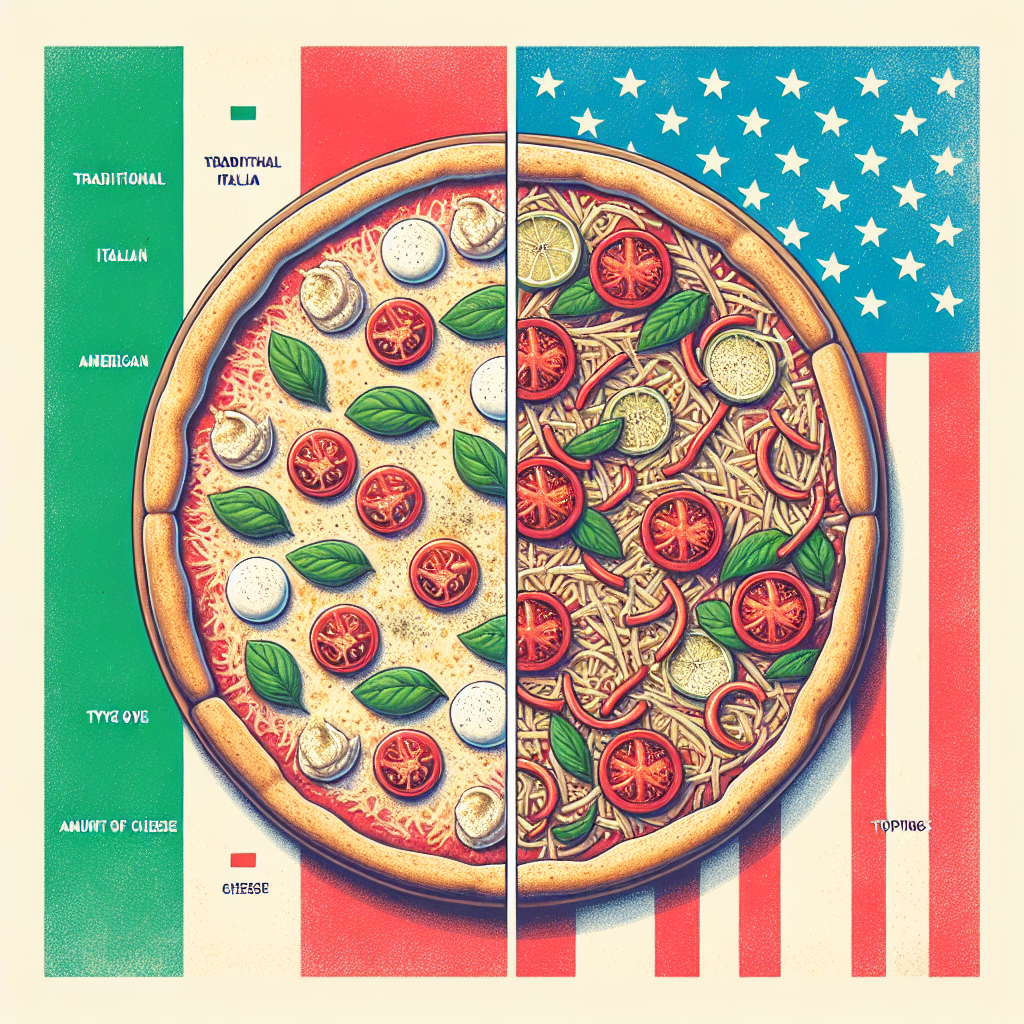“`html
Traditional Italian vs. American Pizza: What’s the Real Difference?
Introduction: Exploring the World of Pizza
Pizza is undoubtedly one of the most beloved dishes worldwide, with countless variations and a rich cultural history. Among these, the traditional Italian pizza and the American pizza stand out as the two most iconic styles. Understanding the differences between these two not only satisfies culinary curiosity but also helps food lovers make informed choices, whether dining out or trying to recreate the perfect pizza at home.
Why Does This Comparison Matter?
Pizza styles reflect cultural identity, culinary techniques, and regional ingredients. By grasping the essence of traditional Italian versus American pizza, enthusiasts and professionals alike can appreciate authenticity, master technique, and innovate without losing the soul of the dish. Moreover, those interested in gastronomy, travel, and food marketing can better target audiences or craft storytelling around these beloved food items.
The Benefits of Knowing Pizza Differences
- Enhanced Dining Experience: Choose the pizza that best suits your palate.
- Authenticity in Cooking: Recreate genuine pizza styles at home or for business.
- Cultural Appreciation: Respect tradition and regional uniqueness.
- Marketing Advantage: For restaurateurs and marketers, positioning pizzas correctly can attract the right clientele.
1. The Foundation: Dough and Crust
Traditional Italian pizza begins with a simple dough made from high-quality flour, water, salt, and yeast. The dough is hand-kneaded and left to rise slowly, often for 24 hours, producing a light, elastic base. The hallmark is a thin, soft crust with a slightly charred yet tender edge (cornicione) after being baked at very high temperatures in a wood-fired oven.
Example: The Neapolitan pizza, recognized by the Associazione Verace Pizza Napoletana (VPN), strictly follows these methods to preserve authenticity.
In contrast, American pizza dough varies widely but often incorporates sugar or oil, resulting in a denser, chewier crust. Baking temperatures are lower, and ovens differ (gas, electric), leading to thicker, sometimes crispy or fluffy crusts. Styles vary from the thin New York slice to the thick, buttery crust of Chicago deep-dish pizza.
How to Make Authentic Italian Dough:
- Use “00” flour for fine texture.
- Knead and rest dough for at least 12-24 hours.
- Bake in wood-fired oven at 430–480°C (800–900°F) for 60–90 seconds.
2. Ingredients and Toppings: Simplicity vs. Variation
Italian pizza typically embraces minimalism, using fresh, high-quality ingredients. The classic Margherita pizza includes San Marzano tomatoes, fresh mozzarella di bufala, basil, and extra virgin olive oil. The philosophy centers around balance and freshness rather than abundance.
American pizza toppings are often more diverse and heavier, including multiple cheeses, pepperoni, sausage, vegetables, and sometimes unconventional items like pineapple or barbecue chicken. This caters to broader palates and local preferences, leading to customization and bold flavors.
Applying This Knowledge in Real Life:
- When seeking authentic Italian flavors, look for simple ingredient combinations emphasizing freshness.
- American styles encourage creative experimentation and hearty portions.
- Restaurateurs can craft menus that clearly define pizza types to educate customers.
Important Note: Authentic Italian pizza does not use processed cheeses or excessive toppings, which is a common misconception abroad.
3. Baking Techniques and Presentation
Italy’s traditional pizza baking involves wood-fired ovens that reach extremely high temperatures, enabling a quick bake that locks in moisture and creates characteristic leopard-spotted charring. This method shapes the pizza’s texture and taste uniquely.
American pizza ovens operate at lower, controlled temperatures with longer baking times, resulting in a different crust texture and melted cheese consistency. Additionally, serving styles differ: Italian pizzas are often served whole and eaten with a knife and fork, while American pizzas are sliced and eaten by hand.
FAQs:
- Can I replicate wood-fired taste at home? Use a pizza stone and highest oven temperature or invest in a portable wood-fired oven.
- Is American pizza less authentic? Not less authentic, just reflecting local tastes and culinary evolution.
- What are must-try pizzas in each style? Neapolitan Margherita for Italy; New York-style cheese slice or Chicago deep-dish for America.
Useful Tools:
- Pizza stones or steel plates for home ovens.
- Bench scrapers and dough mixers.
- Authentic Italian tomatoes and mozzarella brands.
Summary
Understanding the differences between traditional Italian and American pizza reveals the beauty of regional culinary identities rooted in history, ingredients, and technique. Italian pizza prioritizes simplicity, authenticity, and craftsmanship, while American pizza emphasizes variety, customization, and bold flavors.
Final Advice and Next Steps
Whether you are a diner, home cook, or restaurateur, embracing both pizza styles enhances your culinary experience. Start by trying both styles authentically, then experiment with recipes and techniques that respect these traditions.
Ready for more pizza insights?
👉 Read our detailed guide on “Perfecting your Homemade Neapolitan Pizza.”
👉 Subscribe to our newsletter for weekly European culinary tips.
👉 Contact us for personalized culinary workshops or marketing strategies tailored for your food business!
“`





